Polyurethane Resin (PU) Bund Lining & Coating Materials
For more than 25 years now, liquid applied Polyurethane resin systems have been used successfully for many different waterproofing and protective coating applications, typically for roofing, but also for trafficked structures such as bridge decks and car parking areas.
Due to their unique characteristics and mechanical properties for roof waterproofing and detailing combined with good chemical resistance and traffic resistance, polyurethane systems have become widely used for a wide variety of different waterproofing applications – from the ‘basement to the roof’ as one manufactuer says, especially where seamless solutions are preferred. These includes their use on many civil engineering structures and facilities to protect structures in both primary and secondary containment areas, wherever high-end performance and a long-lasting durable bund lining or protective coating system is required.
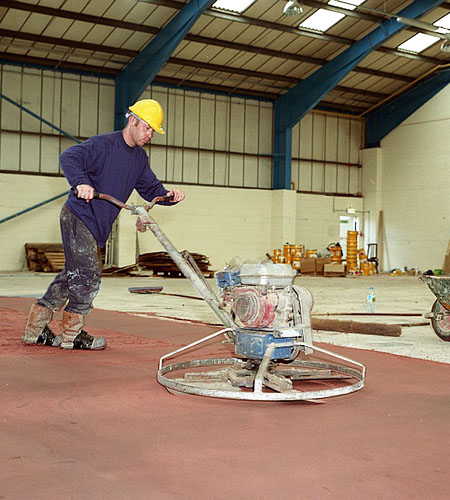
Polyurethane Resins (apologies a bit techy agin – but for clarity of understanding) Chemically a polyurethane is the result of a chemical reaction between an isocyanate and a polyol. There are different polyols that can be used including polyether and polyester for example, and as a rule the resultant polyurethanes that they produce, then require the action of an appropriate catalyst in order to form a hard resin and one that can also cure rapidly. Interesting note: Polyurethane / PU coating materials are often referred to by self-appointed coatings experts as ‘urethanes’– But if you hear this from anyone let it be a warning! A ‘Polyurethane’ is completely different chemically to a ‘Urethane’, and is not produced from or made from them either! ‘Urethane’ is a name that was given to a product called Ethyl Carbamate when it was fist synthesised over a hundred years ago and this name related to its molecular bond form. Ehtly Carbamate was widely used for various medicial applications until the 1970’s when it was discovered that it may be carcinogenic to humans - -it actally occurs naturally in most fermented beverages and foods including beers, wines and spirits, but at very saall levels and nothing to worry about apparently- A good job say our relieved technical coating and lining experts due to their other main interest!
A ‘Polyurethane’ is a completely different material, which is formed from different component groups that have several bonds between these component groups that are similar in structure to the bond in Urethane – that is all and the only similarity – A polyurethane resin is acutally another type of ‘Reaction Resin’ and therefore is actually much closer in structure and nature to an epoxy resin than a urethane.
All very confusing we agree – We blame the various raw materials suppliers and product manufacturers Marketing Departments causing coinfusion over the years again – but if a self-appointed expert talks about them in front of you now, you know the truth and how much faith you can put in whatever else they suggest!
Notwithstanding all of the marketing waffle, Polyurethane Resin Bund Lining and Protective Coating systems for containment areas are available in two main types: there are one-component moisture curing / air drying products and two-component reaction hardening (base resin and catalytic hardener) materials, plus both of these types include solvent-free, solvent dispersed and water dispersed products. So even with this one chemistry of Polyurethane technology we have the potential for at least 6 different types of product, even without the other possibilities for product development (polyurethanes are also closely related to polyureas and can be formulated in combination with them to produce some useful protective coatings and bund lining materials – such as the advanced systems from VIP GmbH).
Our specialist team at NCC can cut through the ‘minefield’ of misleading marketing information and provide you with the specific expert advice on all of the different polyurethane and polyurea options and help you to find the right solutions for your specific projects. For assistance please just call any of our offices and our experts will be delighted to help..
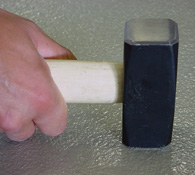
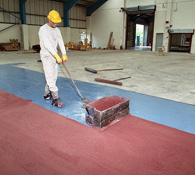
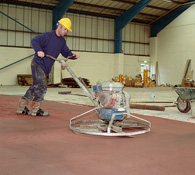
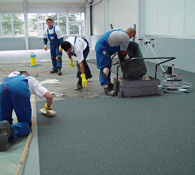
Polyurethane (PU) Lining & Coating: One-part Products
In 1 part / one-component / single-pack polyurethane products the catalyst for the material to cure is usually water, water from the atmosphere (as water vapour from the humidity), or water from the substrate. This is the reason that one component polyurethane coatings are described as sensitive to moisture and must be applied on dry substrates. When a damp concrete substrate has to be coated, it is usually first sealed with an epoxy primer and then the surface is allowed to dry before the PU coating application.
One-component water dispersed PU Coating products are not generally of sufficiently high performance and durability for use in anything other than light duty applications (i.e. domestic etc.) and certainly not for any medium to heavy duty commercial and industrial requirements where aggressive chemical and / or trafficking resistance is required. However there are solvented or solvent containing, one-pack polyurethane resin coatings and bund linings that have relatively high performance, but they also have all of the same application difficulties and restrictions for use (Health & Safety, Fire risk etc.) as other solvent containing resin coatings and lining products.
However the one-part, solvented PU coatings can provide very useful protective coatings and bund or linings for domestic and relatively light to medium duty commercial and industrial applications, such as those around limited oil storage, recovery and delivery areas, where their function is secondary containment of any spillages whilst removal and clean-up is arranged. The best example of these on the market is probably the Sikafloor-400 System.
NCC do not recommend any one (or two part) solvent containing polyurethane resin systems for use in any internal or below ground bund lining, or containment tank applications. This is because when they are applied there will be VOC’s released into the air that are potentially dangerous to people and the environment, plus they will have restrictions in use, protective clothing and equipment will be required, which will always increase the project costs and at best be very inconvenient to comply with the necessary H&S restrictions, and all for a relatively low performance type of material.
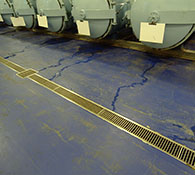


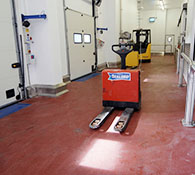
Two-part Polyurethane (PU) Resin Bund Lining & Coating Products
Two-component PU Resin Bund Lining and Protective Coating materials are generally solvent-free, high build coatings which have excellent wear and chemical resistance, together with inherent flexibility and even elasticity, which means that they can be used where defined crack-bridging properties are required from the protective coating system. As they are usually designed to be fast curing (15 to 45 seconds), the products are normally applied with two-component airless spray equipment, where the mixing occurs at the nozzle. This can also be further controlled by using heated airless spray equipment (i.e. from the Graco XP Quick Set Range), and selecting the temperaure that achieves the initial set time that is required i.e. to allow te material to flow into the surface profile, or not to flow down vertical surfaces, all according to the projects specified requirements.
The use of solvent-free materials allows the coating and linings systems to be built-up in thicker layers, requiring the minimum number of applications, without blistering and intercoat delamination due to entrapped water or solvents. Water dispersed 2-part polyurethane products are not recommended for this type of linings and coatings.
The solvent-free two-pack PU linings and coatings usually need pre-treatment of the surface against moisture and ongoing vapour transmission etc., to seal porous concrete or masonry surfaces and also to ensure that the PU coating bonds sufficiently and chemically to the primer on dense substrates – Therefore PU resin Bund Linings and Protective Coatings are usually applied to concrete substrates surfaces that have first been mechanically prepared i.e by blastcleaning; then it is sealed, typically with a clear, penetrative, moisture tolerant, epoxy resin based primer that in this way ensures adhesion of the top coats, and a pinhole-free, polyurethane based, protective top coating or bund lining material.
The specialists at NCC can advise you on the most suitable polyurethane or other resin bund lining or protective coating solution for your specific project needs. Please call any of our offices for assistance from our protective coating and lining experts.
